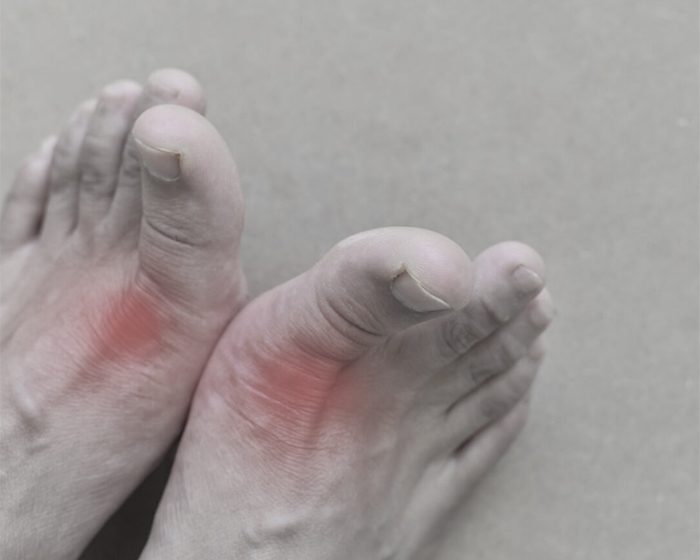Acute CPP crystal arthritis

What is acute CPP crystal arthritis?
Acute calcium pyrophosphate (CPP) crystal arthritis is a condition that can cause pain and swelling in joints. It’s known as a calcium crystal disease because the pain is caused by crystals of the mineral calcium rubbing against soft tissue. It most commonly affects the knees, but can affect other joints too. Calcium crystals are normally in bones and teeth to help make them strong. However, people can have too much of these crystals and in the wrong place in the body, and this can cause problems. In acute CPP crystal arthritis they can form in the cartilage at the ends of bones. Many people can have calcium crystals in their cartilage for years without them causing any problems. However, these crystals can move from their protected site within the cartilage into the space between the bones in a joint. This area is called the joint cavity. This can cause pain and swelling as the sharp, hard crystals rub against soft tissue. The process of the crystals shaking loose and leaving the cartilage is called crystal shedding.The name of the condition comes from the substance which forms into crystals, calcium pyrophosphate.An old name for acute CPP crystal arthritis is pseudo-gout, or false gout, because the symptoms look like a condition called gout. However, gout is caused by crystals of the waste product urate rather than calcium crystals.It’s rare for acute CPP crystal arthritis to affect people under the age of 60.Men and women are affected in equal numbers.Many people with osteoarthritis, particularly of the knee, have these calcium crystals in their joint cartilage. This is called osteoarthritis with calcium pyrophosphate crystal deposition (osteoarthritis with CPPD for short).These crystals tend to make the symptoms of osteoarthritis worse.
What are the symptoms?
The knee is the joint most commonly affected by this condition, but people can also get acute CPP crystal arthritis in the wrist, shoulder, ankle and occasionally other joints. Usually just one joint is affected at any one time.
These symptoms tend to last from several days to two weeks. Acute CPP crystal arthritis usually settles on its own without needing treatment.
You may notice the swelling going down within a week, though your joints may be very painful for the first few days. Affected joints may take two to three weeks to return to normal.
Causes
Chemical changes within the body that can happen as part of the ageing process, can make it more likely for calcium crystals to form.
There are conditions that can increase the amount of calcium in someone’s body. One such condition is called hyperparathyroidism. This involves the parathyroid glands in the throat being overactive. These glands control the level of calcium in the body.
A condition that leads to too much iron in the body, called haemochromatosis, can also lead to acute CPP crystal arthritis.
A rare cause of acute CPP crystal arthritis is hypomagnesaemia. This is a condition in which people don’t have enough of the mineral magnesium.
Research has found that people can inherit a faulty gene that may rarely lead to the production of too much pyrophosphate. It can also cause repeat attacks of acute CPP crystal arthritis at an unusually young age – even in the 20s or 30s.
In the cartilage of someone who has osteoarthritis, the concentration of pyrophosphate is increased, making it more likely that crystals will form.
What triggers a painful episode of acute CPP crystal arthritis?
The pain and swelling of acute CPP crystal arthritis happens when the crystals shed from cartilage into a joint. Often, it’s not clear why the crystals have shed.
Sometimes though it will be obvious what has caused the crystals to shake loose.
For example, an injury to your knee may shake the crystals loose, causing pain and swelling a day or two afterwards.
Another common trigger of crystal shedding is an illness that causes a fever, such as having the flu or a chest infection.
A major stress to your body – such as having an operation or a heart attack – can cause the crystals to shed.
How can we Diagnose CPP crystal arthritis?
Acute CPP crystal arthritis can appear very similar to both gout and an infection within the joint.
It’s very important to see your doctor when you first have symptoms of pain, swelling and redness over a joint, because they’ll need to carry out tests to rule out other conditions.